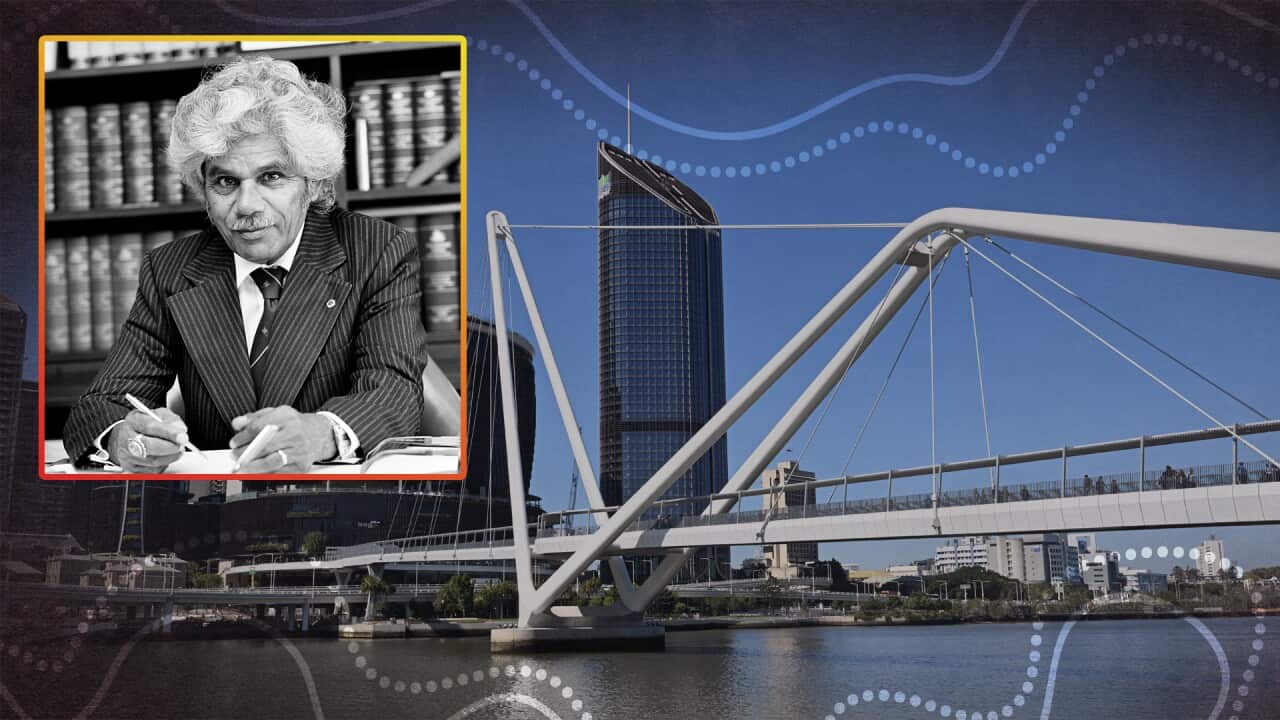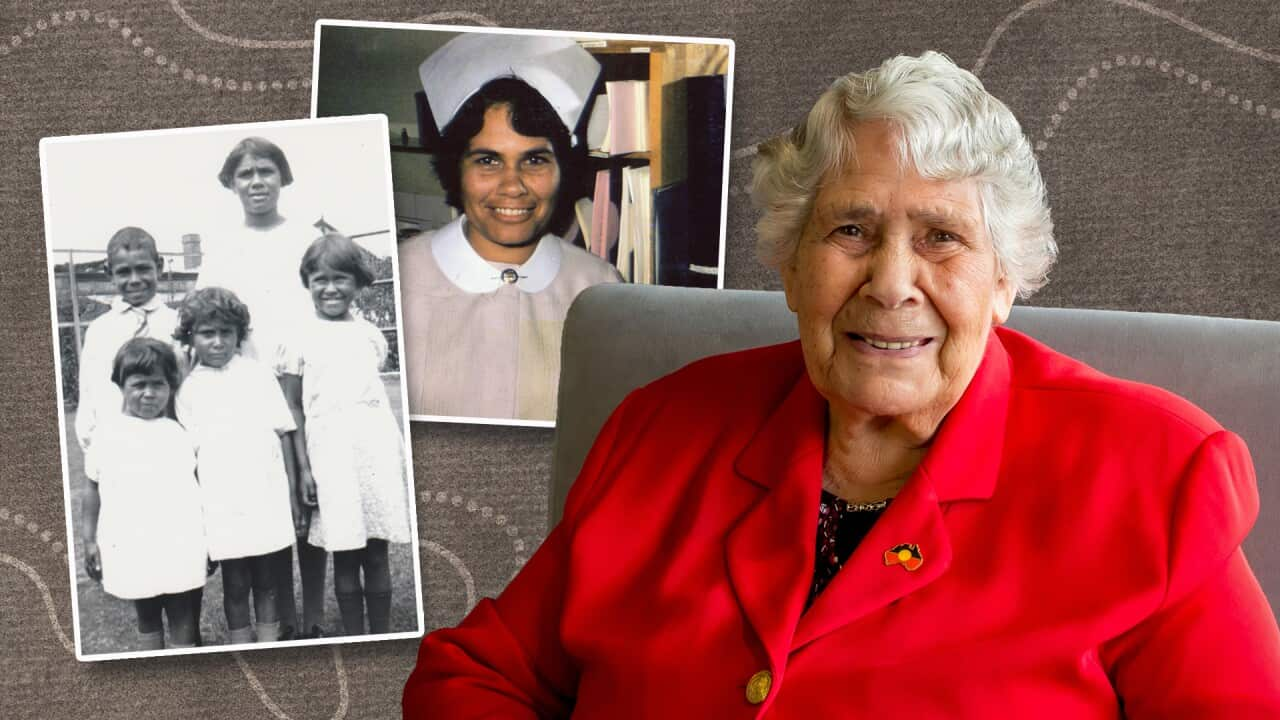A new bridge has opened in Brisbane, named after the country's first Indigenous parliamentarian, Jagera man Neville Bonner.
The Neville Bonner Bridge connects the new Queen's Wharf precinct in the Brisbane CBD with South Bank, stretching across the Brisbane River.
It is estimated that 10,000 people will use the bridge each day.
Mr Bonner's granddaughter Melisa Anderson told the ABC that she was proud of him and the work he did for Indigenous and non-Indigenous people.
"This is something so significant, especially for our Indigenous people – not only in Queensland, but across Australia – to have something as large as this to be (dedicated) in his memory," she told the ABC.
Who was Neville Bonner?
On the 28th March 1922, a baby boy by the name of Neville Bonner was born in a little gunya under a palm tree, on a government issued blanket, on Ukerebaagh Island in the mouth of the Tweed River, NSW.
At the time he was born, he was not recognised as an Australian citizen, but he would eventually become known as the first Aboriginal person to enter federal politics, paving the way and opening the doors for other Indigenous politicians.
He wasn’t born in a hospital because, in his own words:
“There was nowhere else for my mother to go, in those days, people won't know too much about it, but in those days, Aboriginal people had to be out of the towns before sunset.
"And they couldn't get back into town again until sunrise the next day, my mother was not allowed to go to hospital to give birth to me, she gave birth to me in a little gunya under the palm tree, that still lives down there, on a government issued blanket.
"Those are the kind of things that we had to cope with when I was born and when I was a small child, right up into my teenage years and into my manhood."
Apart from one single year of formal education between the ages of 14 and 15, he worked various manual labour jobs from the age of seven: “Suppose I've done every labouring job known to man, cane cutting, scrub felling, timber cutting."
By the age of 20 he was already married to his first wife, Mona Bonner, and was working as a head stockman in Hughendon, Queensland.
In 1943 he and his family moved to the Aboriginal reserve on Palm Island, where he learnt carpentry and eventually became a supervisor of several hundred workers.
In 1960, Bonner was invited by the Queensland Director of Native Affairs, Con O’Leary, to become the first Aboriginal departmental officer, working in Cherbourg. This offer was conditional on Bonner and his family living segregated from the Aboriginal community, he refused. Infuriated, O’Leary declared that Bonner could no longer live on Palm Island, forcing him to move to Mount Crosby (outside of Brisbane) where he initially worked as a manager for a dairy farm, and later as a labourer for Brisbane City Council.

Screen grab from National & Sound Archive of Neville Bonner addressing Self Determination. Source: Supplied
It was around this time that Bonner gained a strong interest and involvement in politics, becoming a member of the Liberal Party just months after the historic 1967 referendum. He was also an active member of the Coloured Welfare Council, which would eventually merge with the One People of Australia League (OPAL), serving as the league’s president from 1968 until 1974.
During this time his wife Mona passed away, and in 1972 he remarried to his second wife, Heather Bonner, whom he had met through his work with OPAL.
He is quoted as saying that he had an "an all-consuming burning desire to help my own people", and aspired to see Aboriginal people retain their culture while also being able to access the social, economic and educational opportunities available to white Australians.
Within his first year with the Liberal Party he was a branch delegate to the Queensland Liberal Party convention and, by 1969, a member of the party’s state executive.
In 1970, he was nominated by the Queensland Liberal Party for preselection for the half-Senate election later that year. Although unsuccessful, he was again nominated in 1971, and made history by becoming the first Aboriginal Senator anywhere in Australia.
As a Senator, Bonner was known to be highly intelligent, strong-willed, and loyal to the Liberal Party and to his fellow Aboriginal Australians, and to all Australians regardless of race, colour, or religion. No mean feat given the times in which he lived, and the fellow politicians he had to contend against.
He championed issues which are still of critical importance today, such as pre-schooling for Aboriginal children, community consultations over government policies, mining and development, and Land Rights.
Although being respected in Parliament he later noted the isolation and loneliness that came with being the only Aboriginal person in Parliament, saying: “I was treated like an equal on the floor of the chamber, neither giving nor asking quarter, but there were hours just sitting in my office, and I went home alone to my unit at night. There was never one night when anyone said, ‘Hey, let’s go out tonight’.”
He was Australian of the Year in 1979, was appointed an Officer of the Order of Australia in 1984, and was awarded an honourary doctorate from Griffith University in 1993.
Neville Bonner passed away in February 1999 in Ipswich, and was accorded a State Funeral.
The Queensland federal electorate of Bonner is named in his honour, further assuring his well-deserved place in history.
READ MORE

Statue to honour Neville Bonner




